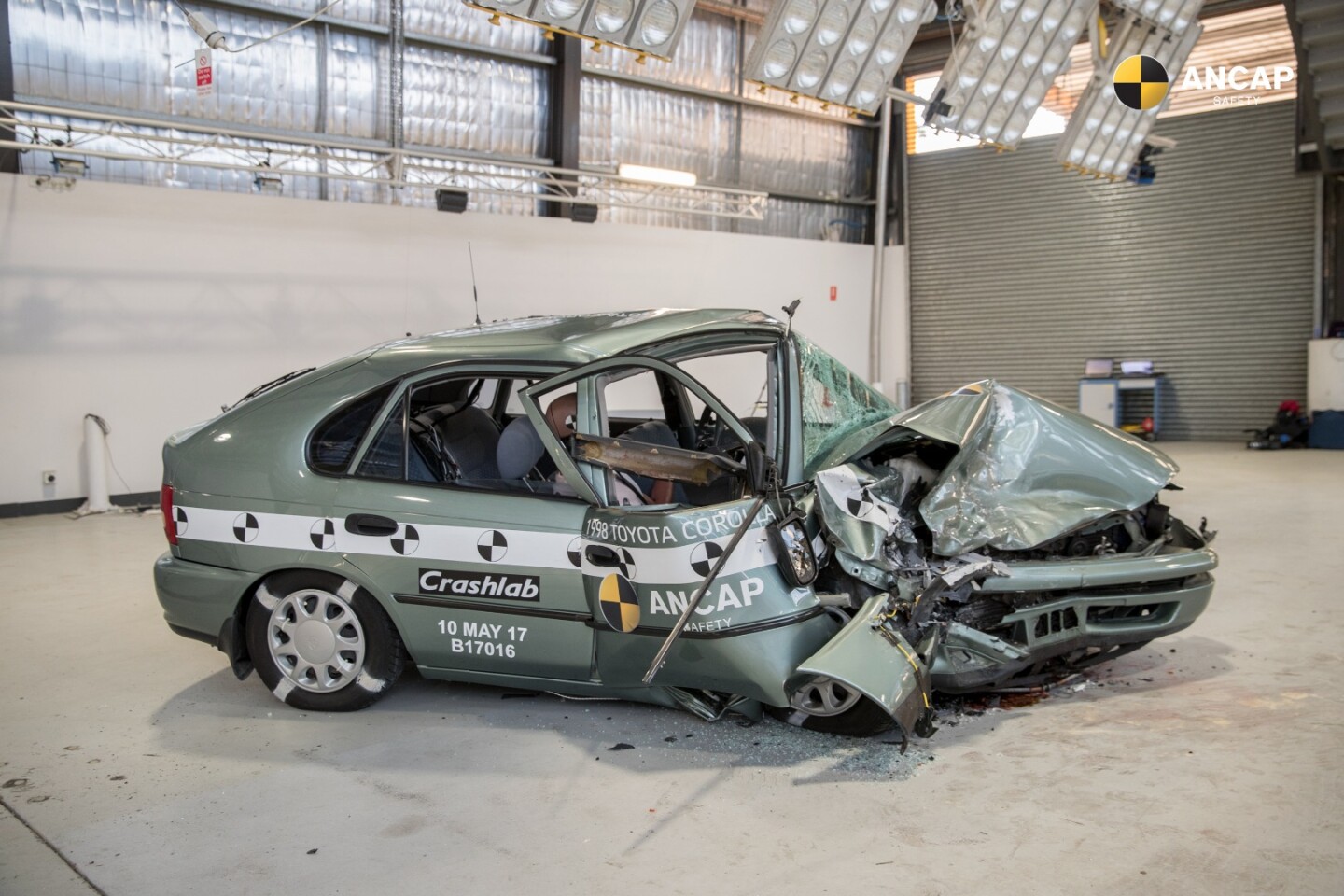With airbags, crumple zones and active crash avoidance systems, modern cars are much safer than their predecessors. But what does all that progress actually look like when push comes to shove? The Australasian New Car Assessment Program (ANCAP) crashed a 2015 Toyota Corolla into its 1998 forebear to find out.
It doesn't take a rocket scientist to work out how this collision is going to end. The modern car comes with seven airbags and has been designed to meet the latest standards for side, frontal and offset impacts. The classic Corolla has no airbags and doesn't benefit from almost 20 years of advances in materials and design. As a result, it doesn't fare well when meeting its modern counterpart at 64 km/h (40 mph).
"The older car sustained catastrophic structural failure with dummy readings showing an extremely high risk of serious head, chest and leg injury to the driver. It achieved a score of just 0.40 out of 16 points – zero stars," says James Goodwin, ANCAP CEO. "In contrast, the current model performed very well with a five star level of protection offered."

The crash test was performed to encourage people to buy the newest, safest car they can afford. According to research conducted by ANCAP, vehicles built before 2000 are wildly over represented in fatal accidents. Even though they make up just 20 percent of the vehicles on the road in Australia, they account for 33 percent of all people killed in road accidents.
You can check out the crash test below. If you're driving around in a modern car, it's likely to make you appreciate the safety features that come as standard nowadays. And if you own a 1998 Corolla, it might be time to look at upgrading.
Source: ANCAP































